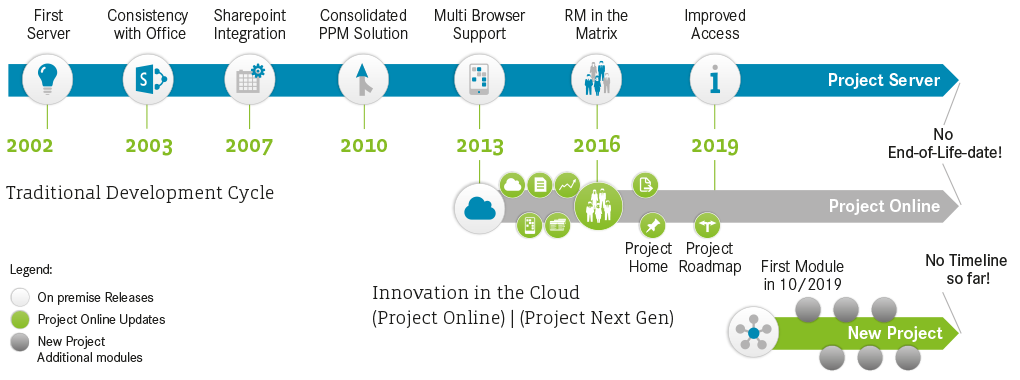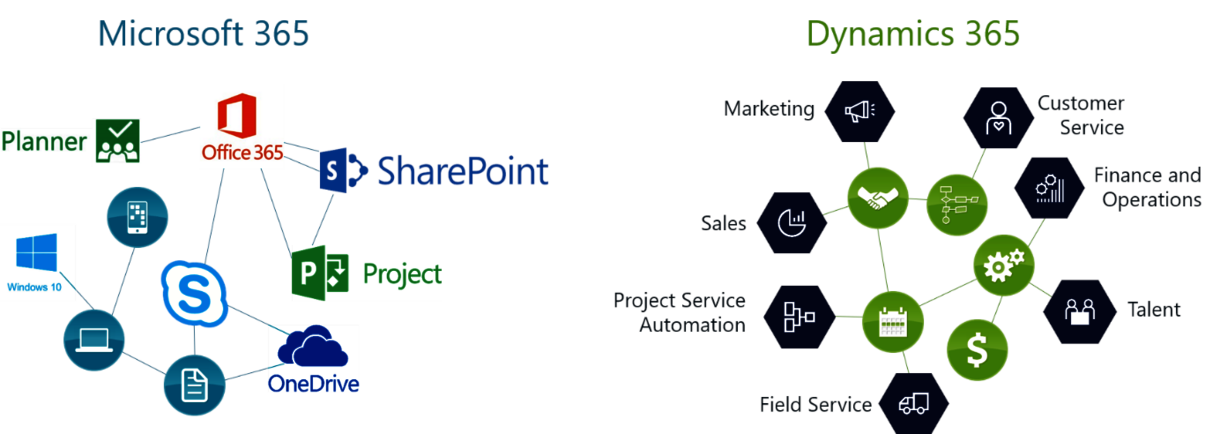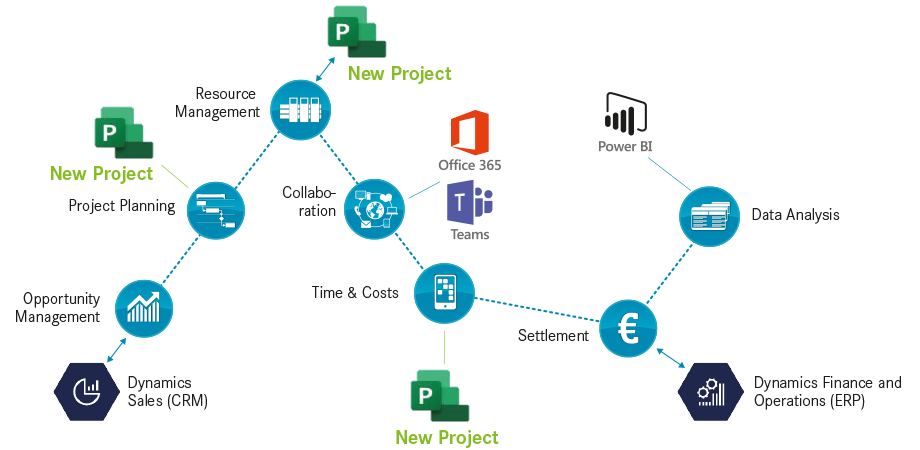Starting now, Microsoft will provide the new service to customers with a Project Online Subscription. Customers were notified of this in their Office 365 Message Center.
Preceding, first insights were given at the in-house Inspire technology conference. In addition to announcements from the project scene, this year’s Inspire conference, which was held in July, focused on the issue of collaboration. In the future, the task management tool Microsoft Planner, the communication hub Microsoft Teams and Microsoft Project will be combined under the more general term Work Management.
Campana & Schott also uses Microsoft applications and looks forward to the innovations for the year 2019. No wonder: Over the last 20 years, Microsoft Project has become one of the most popular project management tools. An overview of the most important innovations is included below.
Simplified planning: The new Project Service
At the conference, Microsoft strategists presented the update for the new Project. It is expected that the first release of this completely revised Cloud service will be issued in the second half of 2019; it concentrates on a radically simpler planning approach in the web browser.
With this product, Microsoft is targeting users who find the current Microsoft Project too big, and the Microsoft Planner too limited. The new Project is suitable for users who work with Planner's Kanban elements and also want to use Gantt Charts, project structures and simple resource planning. This new direction will appeal particularly to users working in sales, marketing and recruiting. Other modules for cost management, resource management and time recording will be added later on.
Better Together:
Added value through integration with other MS Cloud services
In the context of its Better Together strategy, Microsoft is combining Cloud services to generate added value for its customers. This also applies to project and portfolio management solutions. The combination of Microsoft Project Online and Power BI has gradually established itself as a reporting and dashboard tool in practice.
An important trend for 2019 is the fast-growing demand for solutions that combine other products and services such as Microsoft Azure DevOps or Microsoft Teams into an integrated project and portfolio management solution. How this looks in practice is shown by the examples below.
Project and Teams:
Optimum combination for collaboration in projects
Microsoft is continuously enhancing its PPM tools, and in the process also considers two important aspects that are essential for (agile) project management: collaboration and communication. This is particularly true in situations where the work is performed independent of location, which means that communication in the project team becomes a key success factor. The Microsoft Cloud platform offers the ideal support in this context because it addresses the requirements of very different project teams by combining a variety of tools. Even now, Microsoft Planner can easily be used within Microsoft Teams, thus providing all team members with direct access.
Employees do not even have to install software on their device - the web version can be opened with any browser. In this way, Teams becomes a central hub for project teams. Project Online can also be integrated into Microsoft Teams, so that all important project information is now bundled in one tool. It is also expected that Planner and the new Project Service will be connected even more in the future in order to utilize the advantages of both planning approaches.
Project and Dynamics 365:
Integrated solution for customer projects
At this time, there are two Cloud ecosystems in the Microsoft universe - Microsoft 365 and Dynamics 365 - which are largely separate from each other.
Microsoft 365: The Microsoft 365 environment includes the Office and Collaboration tools Office 365 and SharePoint, as well as the project management solution Project Online. Additional tools such as Microsoft Planner and Teams enable company-wide and flexible collaboration between employees in projects. The integration of the different Microsoft 365 tools is intuitive for users, which is essential for globally connected project teams.
Dynamics 365: In addition to Microsoft 365, Dynamics 365 was released about three years ago - it is the Cloud version of the well-known ERP and CRM product line Microsoft Dynamics. It includes the modules Project Service Automation (PSA) and Sales, which make it possible to depict processes between Sales Force and project teams.
Better Together: Over the course of the next few months, the modules Project (part of M365) and PSA (part of D365) will be combined through a common data model, in order to depict the entire life cycle of projects. The process starts in Dynamics as a sales lead up to the point of an offer, followed by project implementation in the new Project as a fully-fledged project management tool. Invoicing continues to be done in Dynamics. In this way, each module is able to play on its technical strengths - together with a consistent user experience.
Power platform: Customizing of the next generation
In addition, both worlds benefit from another trump card: the Microsoft Power Platform. It can be used to radically reduce the development periods for business apps. This means that Microsoft provides users with ever more powerful no-code or low-code options for developing their own solutions. Previously, such solutions would have required in-depth programming knowledge and developer tools.
Today, Microsoft speaks of IT-savvy end users who develop applications on their own, without having to rely on programmers. In the past, users could only create user-defined fields, own views and pages in Project Online. Now, data can be rapidly gathered from all parts of the Microsoft universe, processed and visualized in dashboards and (mobile) apps.
Confirmed by growth rates of 300 to 700 percent, Microsoft is fully focused on the power platform, which allows the Cloud services Power BI, PowerApps and Flow, as well as the Common Data Service (CDS) to combine their strengths. This is customizing of the next generation in a way that has never been done before.



